Month: November 2021
Palm Beach Equine Clinic veterinarian Dr. Richard Wheeler breaks down joint injections in this recent Noelle Floyd Equestrian Masterclass.
Demystify Joint Injections with Dr. Wheeler
In this Equestrian Masterclass by Noelle Floyd, you will learn:
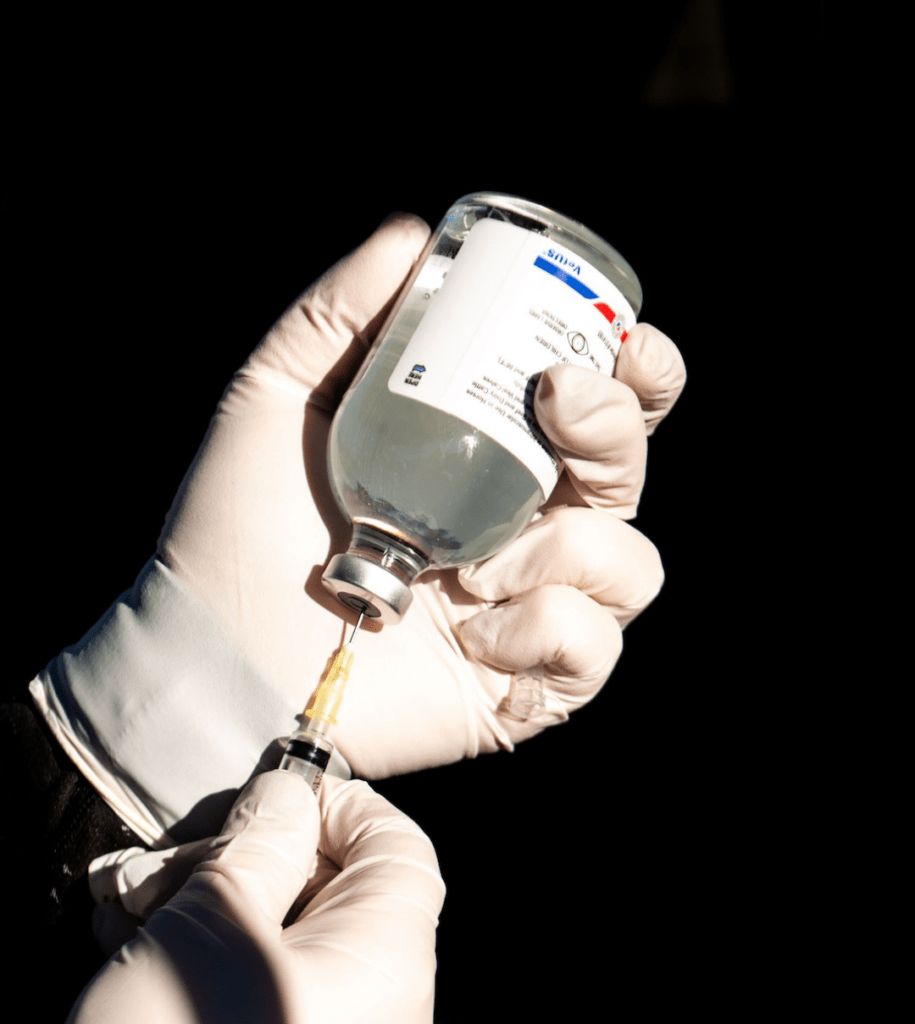
- What joint injections are, what they actually do, and how they’re used
- Why different types of injections are used, how they differ, the science behind each, and the pros and cons of each type
- How vets determine if injections could benefit your horse
- What a pre-injection examination process looks like
- How injections are performed on joints
- What the risks and potential side effects of injections are
- When it’s the right age to start joint maintenance
- What types of horses typically need joint maintenance
- How to choose the best joint maintenance strategy for your horse.
- Common myths and misconceptions about joint maintenance
Learn more and gain access to the full masterclass by clicking here!
Meet the PBEC Team: Dr. Caitlin Hosea
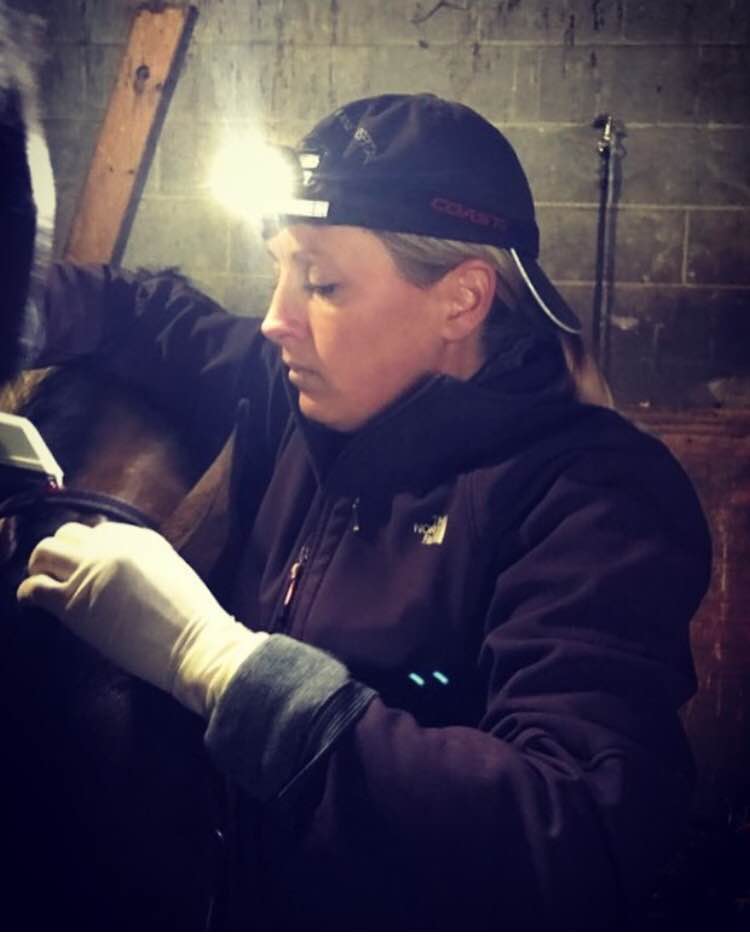
Get to know our team of equine veterinarians
Read more about Dr. Caitlin Hosea by clicking here.
Where are you from originally, and where did you complete your undergraduate degree?
Dr. Hosea: I was born and raised in Santa Barbara, California. I received my bachelor’s in animal science at the University of Kentucky with an emphasis on equine studies.
What is your background with horses?
Dr. Hosea: I started riding at a very young age. Through junior high and high school, I was a working student at a hunter/jumper barn. I groomed and taught summer camps to pay for my lessons and shows. During undergrad, I worked as a groom and rider for a few different barns in Lexington and continued to show my horse. I have a new horse now – one of my favorites from the racetrack that was given to me. He’s shown some talent over fences. Hopefully you’ll see us in the jumper ring soon!
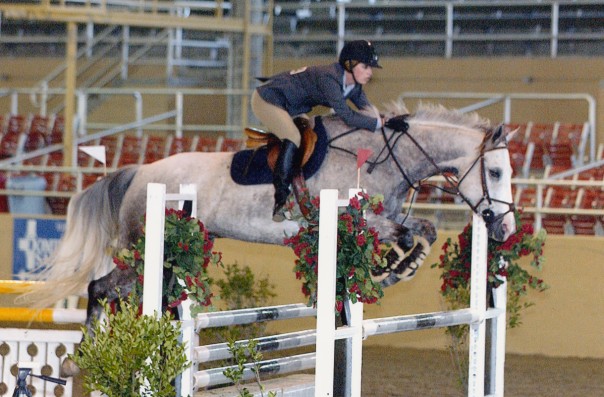
What inspired you to become an equine veterinarian?
Dr. Hosea: My interest in veterinary medicine developed after moving to Kentucky. My goal had always been to ride professionally. That all changed when I got a job as a veterinary technician. I spent four years working at a large equine hospital. I also had a second job as a technician for a racetrack veterinarian. During that time, I gained a wealth of knowledge and exposure to a wide variety of interesting cases and eventually decided that I wanted to go to vet school.
What do you enjoy most about working at Palm Beach Equine Clinic?

Dr. Hosea: I love the variety of cases we treat in the hospital and the opportunities to learn from our large team of talented veterinarians. I always enjoy spending time at WEF as well. I feel very lucky to be able to watch some of the best riders and horses in the world compete at one of the best venues in the country. As a junior, I idolized riders such as Beezie Madden, Margie Engle, and Eric Lamaze to name a few. While onsite at WEF, I am able to watch those riders (as well as a long list of other talented equestrians) compete at the highest levels in person. It’s like having floor seats at a Lakers game.
What aspects of equine medicine interest you most, and what types of cases do you find most rewarding?
Dr. Hosea: Sport horse lameness, podiatry, equine neonatal medicine, and diagnostic imaging, especially ultrasound. Complicated lameness cases are what I really enjoy. After my internship at PBEC, I spent five years working at Keeneland as a racetrack veterinarian. During that time, I was fortunate enough to work with some remarkable horsemen and truly amazing horses. For me, being part of a team that works together to advance a horse’s athletic career is incredibly rewarding.

What experience do you have with equine podiatry?
Dr. Hosea: I’ve always had a strong interest in podiatry. Between my second and third year of veterinary school, I spent eight weeks completing a farrier certification program at Oklahoma State Horse Shoeing School in Ardmore, Oklahoma. During this time, I was shoeing horses every day as well as building hand-made horseshoes in a fire from plain bar stock. By the time I finished, I could shoe a horse all the way around; build, shape, and fit steel shoes; draw clips; and weld bar shoes.
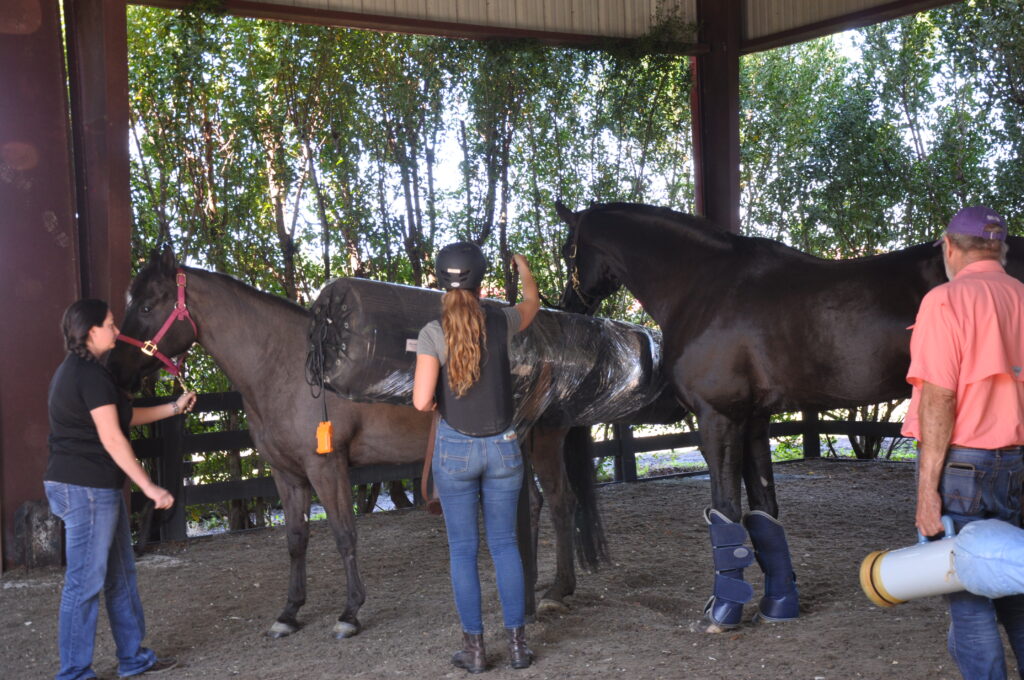
While the traditional breeding process needs no explanation, there are multiple avenues available when it comes to producing a foal. It is important to understand your horse’s reproductive options before starting the breeding process, such as the different conception rates between fresh-cooled and frozen semen or how to guarantee a live foal out of your breeding contract. Palm Beach Equine Clinic veterinarian Dr. Katie Atwood previously guided us through what to expect regarding the mare’s side of this equation, and below she explains several considerations for the stallion’s side.
Start with the Future Foal’s Purpose
When selecting a stallion for semen purchase, the first step is to assess what will be the foal’s purpose and projected goals. Many mare owners will recognize certain weaknesses in their horse and choose a stallion that could compensate for those shortcomings to create the ideal foal. For example, if the mare doesn’t have the scope they would like to have in the foal, an owner might choose a particularly scopey* stallion. Chances are in favor of two talented horses creating a talented foal. However, Dr. Atwood stresses that it is impossible to guarantee that a certain mare and stallion combination will produce the desired result.
“In breeding thoroughbred racehorses, we see a lot of examples of this,” explains Dr. Atwood. “Some owners will repetitively breed a racing stallion but none of his foals will accomplish anything close in comparison to his accolades. You can’t always predict what will come out of the breeding match.”
Still, Dr. Atwood makes a point of impressing upon her clients the importance of first knowing what they want for the foal’s future. Then, consider the health, genetic makeup, and bloodlines of the parents-to-be.

“There are a few genetic diseases that are little known and currently being more researched, such as Warmblood Fragile Foal Syndrome and Hyperkalemic Periodic Paralysis. Testing for these diseases is becoming more common. There are also hereditary traits such as cryptorchidism or conformational issues which are genetically predisposed. Conformational traits can be a factor, so it’s important to take these into consideration when choosing the stallion,” says Dr. Atwood.
Minimizing Risk Through a Breeding Contract
“It is important to have a solid breeding contract in place,” Dr. Atwood recommends. “A detailed agreement gives the owner of the mare specific guidelines as to what they are entitled to receive.”

Every breeding contract is slightly different, so you need to read yours carefully and ask questions. The breeding contract should outline the fees, rebreeding rights, the method of breeding, and the number of doses of semen. Some contracts include a live foal guarantee, which means that you will receive doses of semen until your mare produces a foal that stands and nurses.
Depending on the stallion and his semen availability, you may have a certain number of breedings, or rounds of semen shipments, per breeding season outlined in the contract. The contract, however, can be amended and Dr. Atwood finds this is a common practice because of the unforeseen possibilities that accompany reproduction.
“It can be extremely variable, but many stallion owners, depending on the demand for that stallion and his availability, are flexible,” she notes. “So, if you have an issue with breeding your mare, it’s worthwhile to ask the stallion’s owner to amend the contract. For example, if it is late in the breeding season and the mare’s owner chooses not to continue breeding that season but would like to try the next season, a lot of times the stallion’s owner will agree to extend the contract to the following year for a fee.”
The Stallion’s Breeding Options
You can breed your horse through live cover, artificial insemination with fresh semen, fresh-cooled semen, or frozen semen. The success of any breeding method resulting in a pregnancy is extremely dependent on the mare and stallion and their management. The mare’s age, her prior number of pregnancies, and reproductive health are crucial, as well as the stallion’s fertility, the number of mares he is booked to, and the handling and processing of his semen. Artificial insemination with fresh-cooled or frozen semen is now the norm in sport horse breeding as there are fewer risks and logistical challenges.
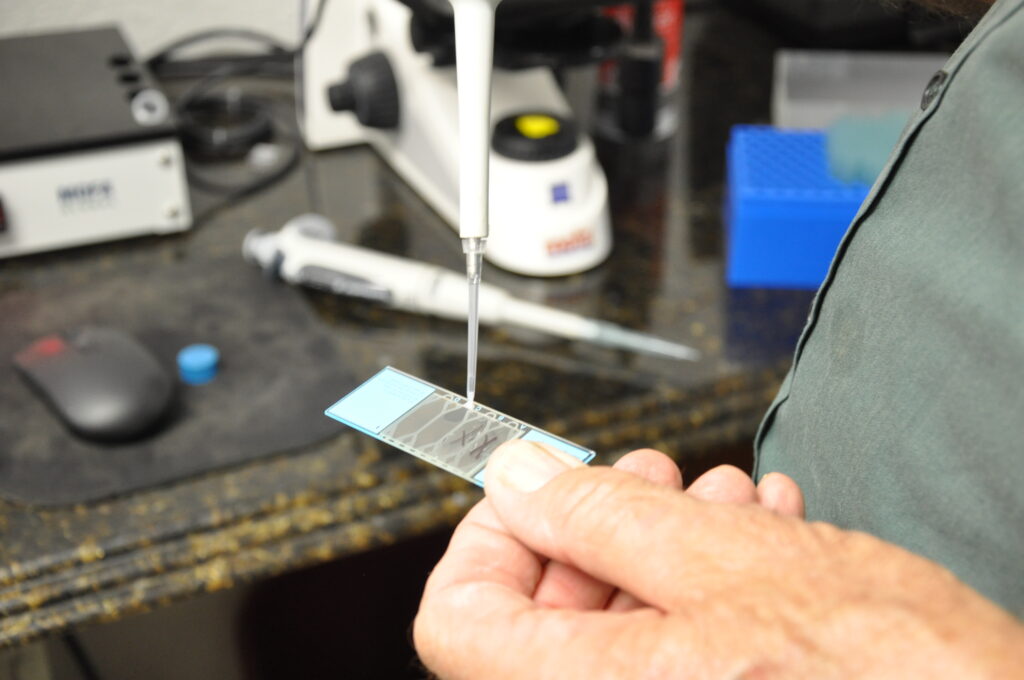
“The beauty of frozen semen is that it lasts forever,” Dr. Atwood says. “Once frozen and appropriately maintained, it is, in theory, good forever. The interesting part is that this can help diversify bloodlines. Sport horses have evolved a lot over the last several decades, and the traits we look for in a horse have evolved as well. There are qualities that we may have overlooked in certain breeds or disciplines because of trends or preferences at that time. With frozen semen, you can go back to a stallion frozen years ago who may be a great option for your mare.”
Not all stallions’ semen can be frozen successfully as some are unable to thaw and still produce a pregnancy. Another option Dr. Atwood recommends is fresh cooled semen, which is often a good choice when breeding an older mare.
“I’ve had instances with mares that couldn’t get pregnant with the owner’s first choice in frozen semen. In that case, I do recommend going with a different stallion or fresh-cooled if available. Fresh-cooled semen is a great option because the sperm is healthier in theory; they are younger, and their motility is usually better.”
What’s Involved in Breeding with Fresh or Frozen Semen
Many veterinarians process, freeze, and package their breeding doses differently, but with the same goal of providing enough to ensure a pregnancy. Industry experts recommend one billion progressively motile sperm per breeding dose. Realistically, half of the sperm will be dead upon arrival and the resulting 500 million progressively motile sperm is found to be an appropriate amount.

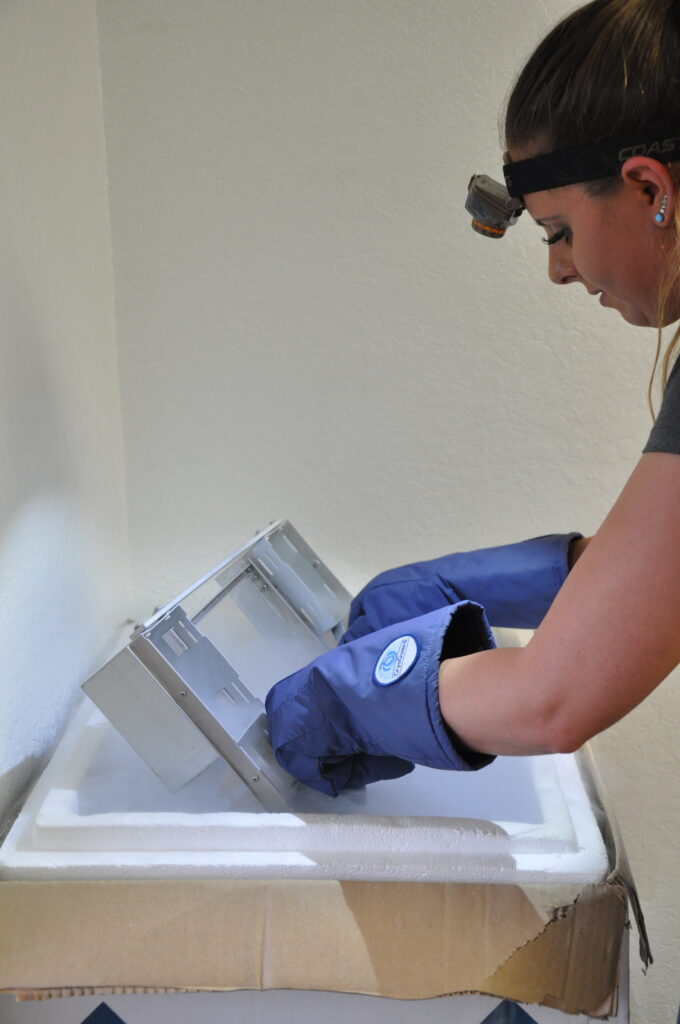
“A lot of people say, ‘you only need one sperm’ to which the answer is yes, in theory, you only need one sperm, but you still need the rest of them to push that one sperm along,” explained Dr. Atwood. “You can’t just put a single sperm in a uterus and expect to get a foal. It just doesn’t work that way because you need a higher volume to build momentum and get that one sperm where it needs to go to form an embryo.”
With fresh-cooled semen, Dr. Atwood checks the mare to see if she is ready to be bred and if so, she schedules the stallion to be collected the next day. With the collection, she utilizes a Computer Assisted Sperm Analyzer (CASA) to assess certain parameters of the stallion’s fertility and then uses a cooling extender agent to preserve the quality of the sperm. The mare can be bred and then checked 24 hours later.
If freezing the semen, Dr. Atwood will process and analyze the sperm, also use an extending agent, and then a cryoprotectant to prevent damage to the sperm during the freeze. She packages the sperm into four to eight half-millimeter straws per breeding dose. Then the semen is placed on a rack and cooled in a temperature-adjustable fridge to prevent damage or sudden shock before freezing. The straws can then be placed into a vapor box for about 20 minutes before being submerged in a liquid nitrogen tank and stored indefinitely. When using frozen semen, once the mare is close to ovulating, she is given an ovulatory agent to help the process begin within 36-48 hours.

If you’re considering breeding your horse, having a knowledgeable veterinary partner on your team will help streamline the breeding process. They will be able to address any questions or concerns about your individual mare and stallion combination, and maximize your chances of producing a healthy foal. Speak with a veterinarian about your horse’s breeding options by calling Palm Beach Equine Clinic at 561-793-1599 or visit www.equineclinic.com/reproduction-and-fertility.
*A horse that jumps with little effort and great power is thought to have scope and considered to be scopey.

In order for top-level performance horses to compete at their best, they must have full range of motion throughout their bodies as well as the ability to move freely. When a horse is out of alignment, a joint, whether it is in the spine or elsewhere in the body, is restricted in its normal range of motion. Veterinary medical manipulation, or what is known as a chiropractic adjustment in humans, is a form of alternative medicine that aims to solve this issue. The goal of any adjustment is to restore the optimal range of motion to that joint, which will subsequently alleviate inflammation in and pressure on surrounding nerves and soft tissue.
Dolton, a nine-year-old Hanoverian gelding owned by Karin Flint, is a well-known name in the para-dressage world. The gelding won two individual gold medals with Roxanne Trunnell at the 2020 Paralympic Games in Tokyo, Japan. Dolton was special from a young age and won his first bronze medal when he was only six years old at the 2018 FEI World Equestrian Games. The pair is trained by Andrea Woodard, who often rides Dolton herself and stays very involved in all aspects of his care. Woodard and Dr. Natalia Novoa of Palm Beach Equine Clinic, who have worked together to treat Woodard’s own horses, thought Dolton could benefit from medical manipulation.
“What I found with Dolton was very common with any dressage horse,” noted Dr. Novoa. “When working with Dolton I make sure that he is correctly aligned. I also address any pinched nerves, tight muscles, tight myofascial, and anything else that could create pain. I saw that the adjustments and the myofascial release were very beneficial for him.”
When a horse is out of alignment, it may result in their gait appearing different than usual, even at a walk. If one area of the body is not functioning properly, horses have to compensate, which can result in many common sport horse injuries. Medical manipulation aims to fix this issue by applying varying amounts of pressure to specific segments of the horse’s body, mainly focusing on the spine. This form of manual therapy, performed by a certified practitioner, often targets joint issues and muscular development. Additionally, medical manipulation can help in stimulating nerve reflexes and reducing pain.
“I like that I can tell Dr. Novoa what I’m feeling, and she tells me what she feels,” described Woodard. “We trust each other’s judgment, which helps in pinpointing where the issue is in the horse. Sometimes it’s something in Dolton’s body that’s not sitting how it’s supposed to. If something is out of position and Dolton is not moving how he is supposed to, other parts of his body can get sore.”
If done routinely, medical manipulation can benefit a horse’s natural balance, topline, and overall performance while also aiding in pain and soreness relief. Once Dr. Novoa began working with Dolton on a regular basis, it became easier for her to not only focus on the areas he needed help with the most, but also to fix them.

“The more I continued working with him the better he performed,” commented Dr. Novoa. “We were able to identify the misalignments and any patterns so that we could more easily correct them. He was progressively more comfortable with treatments as we continued with a regular program in place because he knew what to expect. He is a very sensitive horse. I know his areas of strength and weakness, so we developed a system that works for him, and we continue to have great results.”
Being certain that Dolton’s body is functioning properly is extremely important in para-dressage. Flint makes sure that both Woodard and Dr. Novoa are integral in his care so that Trunnell and Dolton can be confident stepping into the ring.


“With para-dressage you never know what you’re going to get that day with your body,” described Flint. “This means that it is really important to know what horse you’re getting. That’s why chiropractic work, all their care, and overall health is so important.
“The reason we like Dr. Novoa is that she’s very knowledgeable about the physics and mechanisms of the horse,” continued Flint. “Someone who isn’t familiar with this can do more damage, which is true with humans too. Someone who doesn’t listen to signals can end up putting the horse in more pain. She is very, very good at what she does.”
Sport horses are able to perform at their best when they are comfortable and have proper range of motion throughout their body. It is helpful to have horses examined by a certified veterinary medical manipulation practitioner to check that their body is moving properly and to decrease the chance of an injury due to compensation. Call Palm Beach Equine Clinic today at 561-793-1599 to set up an appointment.
Palm Beach Equine Clinic Provides Veterinary Students Opportunities to Further Education and Career

The path of veterinary medicine involves many years of devotion to education, both at the undergraduate and graduate level, prior to putting that knowledge into practice. Only a handful of those students choose to pursue equine medicine, and an even smaller subset then take on the challenge of becoming a board-certified specialist in their chosen field.
Since its inception 40 years ago, Palm Beach Equine Clinic (PBEC) has been committed to supporting the next generation of equine veterinarians and has provided numerous students, at various stages in their education, with learning opportunities and mentorship. Through externship, internship, and residency programs, PBEC has helped prepare students and veterinary graduates to lay the groundwork for successful future careers.
Equine Medicine in the Equestrian Capital
One of the key benefits of the programs is that PBEC is based in Wellington, Florida, an area that has rightfully earned its title of “Winter Equestrian Capital of the World.” The region is home to show jumping, dressage, polo, racing, and western performance horses; allowing ample opportunities for veterinarians to become well-rounded sports medicine practitioners.
“We are one of the foremost equine medical centers in North America and based in the epicenter of the equine industry,” said Dr. Scott Swerdlin, the president of PBEC who also spearheads the clinic’s Internship Committee. “The opportunities we are able to offer students looking to pursue a career in sports medicine are unmatched. In this regard, we are fortunate to attract top talent from some of the most prestigious universities around the world. Our interns get to be part of all the action and learn in an environment where every aspect of the horse’s health is examined with a fine-tooth comb.”
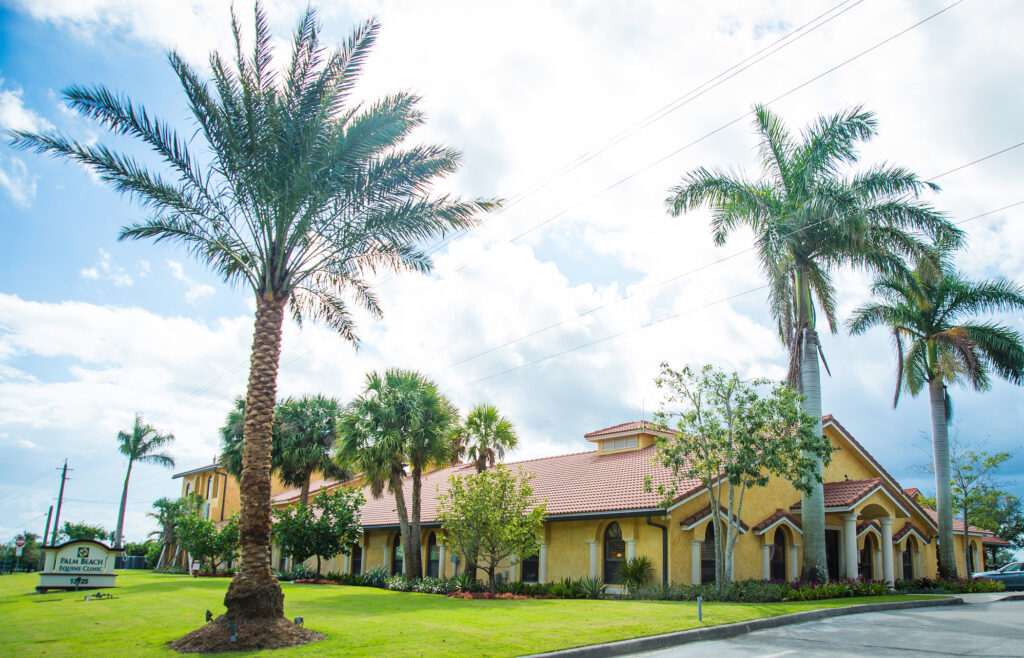
A Melting Pot of Expertise
PBEC’s team encompasses over 35 veterinarians who hail from across the U.S. and abroad to Canada, Colombia, Argentina, Australia, the U.K., and beyond. Their areas of expertise are wide-ranging, from lameness to acupuncture and breeding to dentistry, including board-certified specialists in surgery, diagnostic imaging, and internal medicine.
Dr. Sidney Chanutin grew up immersed in the horse world and spent time shadowing nearly every veterinarian at PBEC while she was in high school. After earning her doctorate in veterinary medicine from the University of Florida, she returned to officially join the PBEC team as an intern.

“What I most enjoyed about my internship was learning from a diverse group of veterinarians,” said Dr. Chanutin, “along with their different backgrounds, styles of working, and varied approaches to problem-solving. Everyone is willing to help and offer their unique perspective, so it’s a truly cohesive team.”
The first introduction to PBEC for many students is an externship. Qualified veterinary students in their final years of school can spend a few weeks with the PBEC team shadowing emergency cases in the hospital, on ambulatory calls, and at sports medicine appointments at the industry’s top competition venues. Externships also act as an introduction to the practice for many students seeking an internship upon graduation. This allows both the aspiring veterinarian and the PBEC team to become familiar with each other and see if it may potentially be a good match for a 12-month internship position.
Dr. Santiago Demierre is originally from Argentina and completed his degree in veterinary medicine from the Universidad de Buenos Aires in 2012. He validated his veterinary degree in the United States in 2017 through a certification program with the American Veterinary Medical Association. Dr. Demierre was an integral part of PBEC initially as an intern before becoming an official staff veterinarian.
“The high caseload and long-term partnerships working and learning alongside great veterinarians helped me not only in improving my professional skills and knowledge but also with other aspects such as communication with clients and colleagues,” Dr. Demierre reflected.

Unlike in human medicine, internships are optional for veterinarians. Once a veterinarian passes the necessary state board exams, they can start treating animals on day one out of school. Choosing to work under the supervision and mentorship of experienced veterinarians allows interns to apply their years of learning in the classroom into clinical practice. At PBEC, interns can learn with the aid of advanced technologies in diagnostic imaging, innovative regenerative therapies, reproduction and fertility software, and specialized surgical suites.
“While we can teach and provide them with a wealth of knowledge and hands-on experience,” Dr. Swerdlin explained, “our interns in return are extremely valuable to us because they bring a fresh mindset and new ideas to the team,” explained Dr. Swerdlin. “The ability to work well with others, a good sense of humor, great work ethic, and most importantly, excellent communication skills are the qualities I look for in an intern.”
Never Stop Learning
Continuing education is a major component of a life in medicine. In addition to journal clubs, educational seminars, and opportunities to travel to professional conferences, students are always exposed to learning opportunities by working collaboratively with colleagues as well as visiting and referring veterinarians.
After completing their internship, most will pursue an associate veterinarian position, whether at PBEC, another private practice, a university, or work independently. Some will go a step further and advance their education through a residency program. Residencies are rigorous two to four year commitments—length dependent on the specialty—designed to give veterinarians the skillset, knowledge base, and experience required to become eligible for certification by veterinary medical specialty boards. Board-certified specialists are considered experts in their field and often treat complicated, difficult cases.
With board-certified specialists on staff, PBEC has provided residencies to select veterinarians over the years, including Dr. Michael Myhre. A graduate of Cornell University College of Veterinary Medicine, Dr. Myhre fulfilled his surgical residency under the direction of PBEC’s board-certified surgeons Dr. Robert Brusie, Dr. Weston Davis, and Dr. Jorge Gomez. He assisted on over 568 surgeries over his three years at PBEC.
“Completing my residency at PBEC has allowed me to pursue my dream of becoming an equine surgeon and working at a large referral center in the northeast. I learned a great deal about all aspects of general surgery, but especially orthopedic surgery. We did many fracture repairs at PBEC, and I would love to continue focusing on these in the future. Without my time at PBEC, I wouldn’t be able to practice as I am now,” Dr. Myhre said.

Externs, interns, and residents are integral members of the equine hospital. It is part of PBEC’s mission to support the community, which includes the next generation of equine veterinarians.
Dr. Swerdlin said, “Teaching and mentoring young veterinarians and watching them grow into confident and competent practitioners gives me the greatest satisfaction.” To learn more about externships, internships, and other opportunities with Palm Beach Equine Clinic, please visit equineclinic.com/internships-externships or call 561-793-1599.